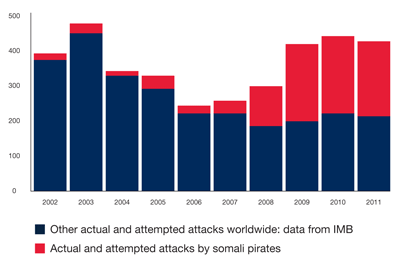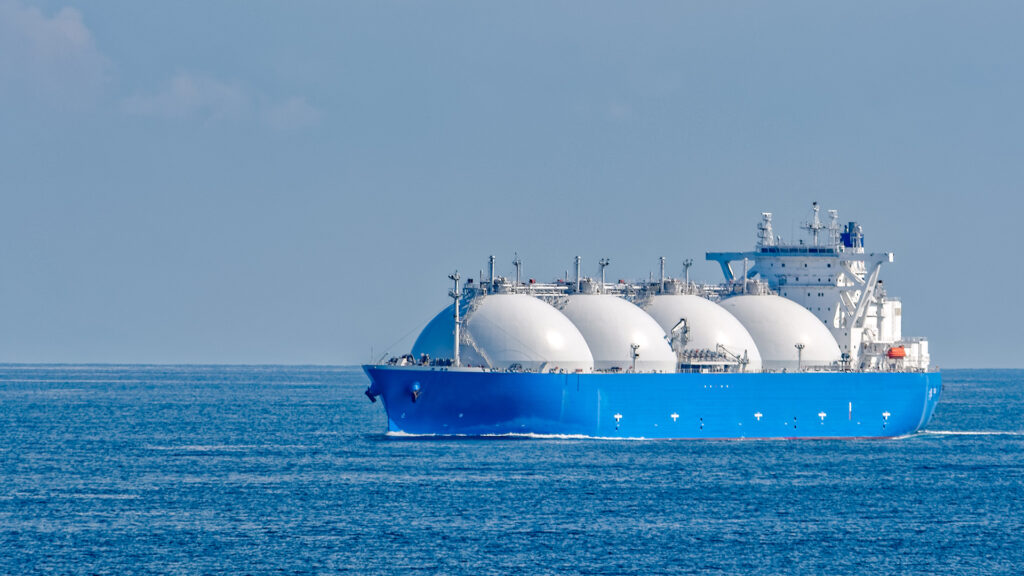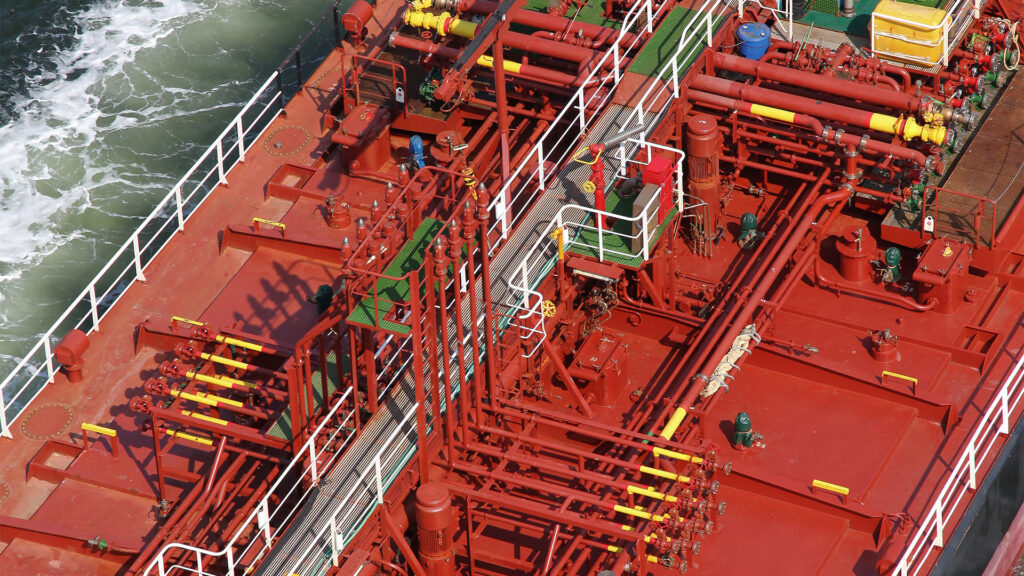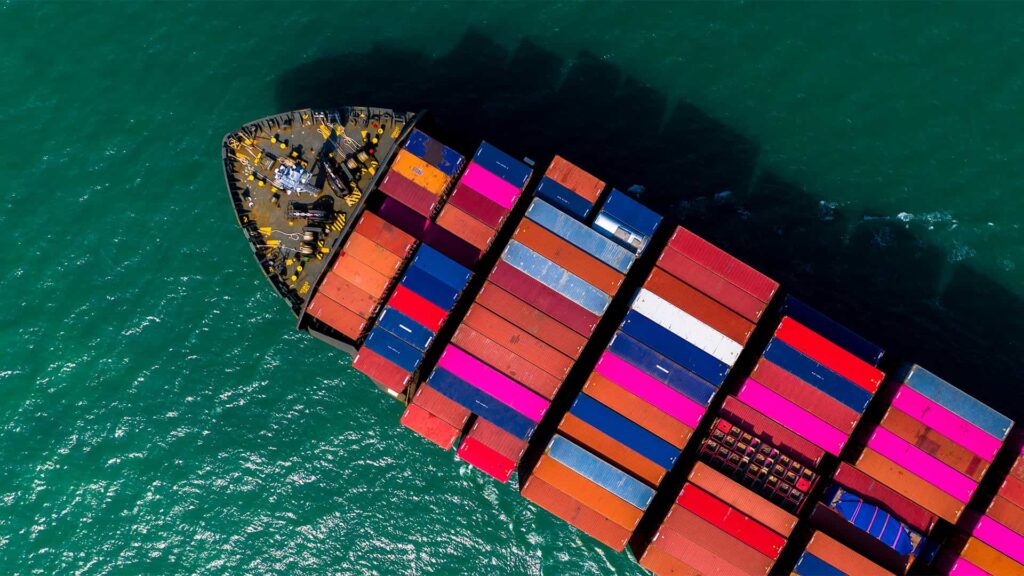Safety at sea – with particular reference to piracy
This briefing looks at the development of responses to a number of aspects of safety at sea, and draws lessons for the future in relation to the risk of armed robbery and hijackings. In the past, many safety issues for shipping have been addressed by legislation. It seems likely that a multi-part regulatory regime will ultimately be imposed for measures against piracy.
Lessons from the past
Shipping has been described by the International Maritime Organisation as perhaps the most international of all the world’s great industries, and also one of the most dangerous. The numerous safety features incorporated into modern ships did not come about by chance or simply by the foresight of the more diligent shipowners: they resulted from rules imposed by classification societies and flag states, or by legislation. Otherwise, some shipowners would have found it expedient not to incorporate them. Many of the safety initiatives were developed in the 19th and early 20th centuries. Currently, international shipping is facing severe risks from piracy and armed robbery, in response to which prudent shipowners are voluntarily taking measures that may soon have to be enforced for the benefit of all. An indication of what the future holds may be gained from seeing how various safety issues for shipping have been addressed in the past.
Overloading and construction
Historically, seafarers were often exposed to the risk of their ships capsizing from being overloaded, because the degree of loading was left entirely to the shipowner. Efforts to prevent merchant ships from being overloaded were very haphazard until the Middle Ages, when enforcement measures were taken by the Venetian Republic, and in Northern Europe by the Hanseatic League; and later were imposed by the major maritime nations when longer voyages became commonplace. In response to appalling loss of life during the 19th century, rules governing construction and seaworthiness were also gradually developed. In 1835 a rule to avoid overloading, specifying a relationship between freeboard and the depth of the hold, was introduced by what was then Lloyd’s Register of British and Foreign Shipping, for vessels registered with that organisation. By the Merchant Shipping Act of 1876 load lines became compulsory for all British ships; but it was not until 1894, when the position of the line was fixed, that the full benefit of what is known as the Plimsoll Line was felt. Eventually, international uniformity resulted from the 1930 and 1966 Load Lines Conventions.
Collision
Another major risk for merchant shipping is the danger of collision, in relation to which navigation and ship construction are key features. Navigation regulations for the avoidance of collisions have been in force since the late 18th century, and important safety construction features were imposed during the 1850s, including the requirement that iron ships be fitted with a collision bulkhead and an engine-room bulkhead. The introduction of navigation lights enabled the navigation regulations to be developed further, first by Trinity House and then by the Steam Navigation Act of 1846. During the second half of the 19th century the rules went through several phases within the Merchant Shipping Acts and culminated in the Maritime Conventions Act 1911. Subsequently, navigation rules have been refined in various ways and are currently based on the 1972 Collision Convention, which came into force in 1977 and has been adopted by 154 countries for over 98 per cent of the world’s tonnage (1).
Fire
The Safety of Life at Sea (”SOLAS”) Convention of 1914 highlighted the need for measures designed to minimise the risk and the consequences of fire, among other hazards. Implementation of its recommendations was prevented by the First World War, but subsequent Conventions – SOLAS 1929 and later – led to the introduction of more safety features, including the use of non-combustible construction materials. Even so, the measures proved to be inadequate for passenger ships, as illustrated by a series of fires during the 1960s. Later regulations imposed enhanced requirements for fire and explosion prevention, fire detection, and fire suppression. Recently, operators of some of the older passenger vessels faced a deadline of October 2010 for the removal of almost all combustible materials.
Equipment
The first SOLAS Convention was a response to the sinking of the White Star liner Titanic, with the loss of over 1,500 lives. Among the concepts emerging from that Convention was that not only should merchant vessels carry an adequate number of lifeboats and lifejackets, but that the lifeboats should afford protection against the elements. Other measures related to stability standards, fire-resistant bulkheads, and the installation of a public address system. Later SOLAS Conventions called for additional safety equipment. Recently, attention has focused on ensuring that lifeboat release mechanisms are improved, to avoid further incidents when lifeboats have dropped unexpectedly, sometimes with fatal consequences.
Crew training and competency The importance of having a competent and properly trained crew on board a merchant ship can scarcely be over-emphasised. Indeed, it is estimated that the human factor is a significant component of around 80 per cent of all casualties at sea (2). This covers poor crew competence, lack of communication, lack of proper maintenance, lack of application of safety or other procedures, inadequate training, poor judgment, etc (3). The SOLAS Conventions; the Conventions on Standards of Training, Certification and Watchkeeping; the International Safety Management (”ISM”) Code; and the Merchant Shipping Acts, have all influenced the requirements for crew competence and training, and are supplemented by procedures laid down by flag states and classification societies, among other bodies.
State intervention
The measures summarised above, which have been adopted internationally to achieve greater safety at sea by better construction; by preventing ships being overloaded; by minimising the risk of collisions and fires; and by seeking to eliminate poor equipment and inadequate crewing standards; have a particular element in common. They can all be enforced by flag states, various branches of governments, and bodies such as classification societies and port authorities. In every case, and often following the lead of the British Merchant Shipping Acts and other legislation, there has been intervention in order to establish and enforce adequate standards. Previously, industry practices were not consistent, and were not adequate until made obligatory because some shipowners had not followed them. Similar considerations now apply in respect of piracy. The lessons from the past indicate that some forms of regulation are likely to be imposed to harden ships against the risk of piracy and armed robbery. Some steps have already been taken in this direction.
Piracy
Among the most serious of the hazards that have been faced by merchant vessels in recent years are piracy and armed robbery (4), particularly off the coasts of Somalia, in the Indian Ocean, and, to a lesser extent, in South-East Asia and in the Gulf of Guinea. Details published by the International Maritime Bureau (“IMB”) disclose that hijackings and unsuccessful attacks attributed to Somali pirates rose from 22 in 2006 to 51 in 2007, 111 in 2008, 217 in 2009, 219 in 2010, and 237 in 2011.

As can be seen from the table, activity by Somali pirates accounts for the worldwide resurgence in piracy incidents after a low-point in the year 2006. In the earlier part of the last ten years, the largest number of reported non-Somali incidents occurred from 2002 to 2004, with an average of 142 a year in the area of Indonesia, the Malacca Strait and Malaysia, followed by Bangladesh and India with an average of 56 reported incidents a year.
Virtually everyone has been affected to some extent by maritime piracy, either directly as a seafarer or shipowner, or indirectly as a family member or friend of a hostage, or as one of the military or civilian professionals responding to piracy, or (for most people) as a consumer of oil and goods carried by sea. During the period 2006 to 2011, the places from where the highest number of ships involved in piracy incidents were managed or controlled were Germany (310 incidents), Singapore (264), Greece (223), Japan (108) and Hong Kong (91). During the same period, Somali pirates took 2,372 seafarers as hostages, more than half of a total of 4,395 worldwide (5).
Naval responses
Reactions to the surge in piracy off Somalia have been mixed, and their results variable. The ships of the EU’s Task Force 465, Operation Atalanta; the Combined Maritime Forces’ Combined Task Force 151; NATO’s Operation Ocean Shield, undertaken by Standing NATO Maritime Group 2; and the naval vessels of many countries acting independently, have had a noticeable effect within the Gulf of Aden, and have also been able to prevent some hijackings in the Indian Ocean and elsewhere, to where piracy has largely been displaced. However, the danger area now stretches from Somalia north-west into the Red Sea; north-east to beyond the coast of Oman; east, almost to India; south-east to beyond the Seychelles; and south to Kenya, Tanzania and the Mozambique Channel. This is such a large area, over 2.5 million square miles, that it is impossible for the naval forces to give adequate protection to all vessels at all times (6). A related consideration is that the original driving forces for Somali piracy are to be found among the conditions on land – lack of a competent government; poverty; food shortages; lack of education and job opportunities, among other factors – which have allowed piracy to develop into an industry in its own right (7).
The deployment of destroyers, frigates, and other powerful warships, complete with their crews, often specialist troops in addition, and with associated operational support and other facilities such as maritime aircraft and other forms of surveillance, places a heavy burden on the nations providing them, in terms of money and manpower and equipment. Even so, because of the need for the warships to refuel and replenish provisions (sometimes entailing a port visit because of a shortage of support vessels), and because a priority for Operation Atalanta is ensuring the safe passage of ships chartered by the World Food Programme and maintaining supplies to the Transitional Federal Government and the troops of the African Union Mission on Somalia (“AMISON”), not all those warships are available at any one time to intervene in attacks. And even when naval vessels are able to launch helicopters, acting as a force multiplier by extending the range and speed of a response, because of the size of the danger area it is usually a matter of chance whether they happen to be in a position from where they can reach an attacked vessel in time to prevent a hijacking.
Shipowners’ options
In relation to the threat of piracy off Somalia, individual shipowners have been encouraged not to rely exclusively upon help from warships, but to take measures for their own protection (8). Available options include following the recommendations of the Round Table of International Shipping Associations, set out in version 4 of their “Best Management Practices to Deter Piracy in the Gulf of Aden and off the Coast of Somalia” (”BMPs”) (9); hiring security guards; and deviating either around the Cape of Good Hope to avoid the Gulf of Aden and the western part of the Indian Ocean, or, now more frequently, sailing close to the west coast of India and through the North Arabian Sea. No single measure will guarantee that a ship will be safe from hijacking. Some measures – such as arming private security guards – are controversial, not universally popular (save perhaps in special circumstances, such as a slow tow), can be difficult to implement, and can open a Pandora’s Box of legal complications; while for a vessel needing protection across the whole of the Indian Ocean, the cost of a security team can be high (10). And the increased safety which diversions once offered is now much reduced because of the pirates’ ability to strike over 1,600 nm from Somalia (as shown by the hijacking of Xiang Hua Men on 6 April 2012 in the Gulf of Oman, 1,680 nm from Haradheere), with their operational range increasing all the time.
What is surprising in light of the clear danger from piracy is that some shipowners still take only minimal precautions. The fact that the majority of shipowners follow the BMPs, and use the Internationally Recommended Transit Corridor (”IRTC”) (11) for passage through the Gulf of Aden, was welcomed by the UN Contact Group on Piracy off the Coast of Somalia at their January 2010 session. But they noted with concern the continued non-compliance by a minority, several years after the increase in attacks, and they urged increased action by flag states and shipping companies to continue to minimise the risk of piracy – a clear pointer towards regulation (12). Estimates have put the number of ships not using the IRTC and its facilities when crossing the Gulf of Aden in the order of 25 per cent (13). One of the key features of efforts to avert hijackings is crew training. There is a danger, with the polyglot nature of many modern-day crews, which are often assembled at short notice, that insufficient time is spent on counter-piracy drills as part of safety training. The consequence can be confusion and even panic among some crews in the event of an attack. And even with a crew well-trained in counter-piracy measures, it will be difficult for them to maintain a high degree of alertness during the whole of the several days that a vessel will take to transit the Indian Ocean (14).
Counter-piracy developments
Of particular concern nowadays, in an era of container ships and efforts by all shipowners to minimise costs, is the subject of lower manning levels, which often lead to overwork and fatigue. In the face of threats of attack by pirates, low manning levels are not likely to allow for sufficient lookouts to be deployed continuously in the danger areas, or to allow the crew to react effectively and in good time in the critical period when an attack is threatened or underway. Given the seriousness of the risks off Somalia, in particular the risks for the crews of ships transiting the region, it is natural that various interested bodies have taken steps to try to ensure that all shipowners act responsibly.
At a session of a United Nations Working Group (15), several nations and international bodies outlined their procedures and plans for counteracting piracy. The Philippines, which is the world’s largest supplier of seafarers (16), described its anti-piracy awareness training requirements, and indicated that it was considering calling for a mandatory revision of Ship Security Plans (”SSPs”) (17) where Philippine nationals were employed. Among state flags, Liberia and the Marshall Islands were seeking to implement BMPs through sections of SSPs, and also relevant measures through the ISPS Code (18). The view was also expressed by one state that BMPs could be implemented through the ISM Code: again, heading towards regulation. The United States was using the ISPS infrastructure to implement defensive measures, based partly on the BMPs, for vessels flying its flag, but also including the use of armed guards.
The future
As noted earlier, measures that have been adopted internationally to avert a range of risks at sea, including those arising from overloading, collision, fire, equipment defects, and shortcomings in crew training, can be enforced by flag states, various branches of governments, and bodies such as classification societies and port authorities (19). It seems highly likely that laws and rules will ultimately exist, to ensure a comparable degree of safety for all ships in relation to piracy and armed robbery.
Vessels making their way through ice need to be specially strengthened, and nowadays each classification society has a set of rules governing this. Similarly, it would be prudent for vessels making their way through waters infested by Somali or other pirates to be hardened to resist hostile boardings, and for crews to receive special training, to counter the serious risks associated with piracy. Lessons from the past show that where safety measures are concerned the shipping industry will benefit from regulation. Currently, the most pressing need for regulation and further guidance is in relation to the use of armed guards, on which the IMO and other bodies have made a start.
Footnotes
- Figures provided by the International Maritime Organisation (”IMO”) and Lloyd’s Register of Shipping.
- Speech given by Mr. W.A. O’Neil, Secretary-General of IMO, at the International Symposium on Safer Shipping in the Asia-Pacific Economic Cooperation Region, Sydney (Australia), 6-7 March 2001.
- Psaraftis, H.N. and others, “The Human Element as a Factor in Marine Accidents”, IMLA-10 Conference, St. Malo, France, September 1998 (available from the Laboratory for Maritime Transport, National Technical University of Athens). See, generally, Hetherington, C. and others, “Safety in Shipping: The human element”, Journal of Safety Research, v.37 (2006), 401-411.
- A distinction needs to be maintained between piracy and armed robbery for the purposes of public international law, otherwise a country would be in danger of losing exclusive control of its territorial waters. The ability of foreign warships to pursue pirates and tackle hijackings within Somalia’s territorial waters, derives from UN Security Council Resolution 1816 (2008) and its extensions. The International Maritime Bureau has proposed a more extensive definition of piracy, in an effort to overcome certain anomalies.
- Points to bear in mind with published figures are that not all incidents are uniformly categorised by different organisations and that, for any of a number of reasons, not all attacks are reported. Some estimates put the number of unsuccessful attacks that are not reported as high as 50 per cent globally, rising to perhaps 80 per cent for Nigeria. These estimates includes incidents that under international law would be classed as armed robbery rather than piracy. More moderate estimates put the proportion of unsuccessful attempts at hijacking by Somali pirates that are not reported in the order of 20 to 25 per cent of the total. Among the reasons for non-reporting are fear that insurance premiums would otherwise be increased; and the belief that an owner’s image would be adversely affected if details were made public. The main disadvantage of non-reporting is that the full extent of the problem is not recognised, and that consequently insufficient defensive resources are likely to be made available.
- When giving evidence to the House of Commons Foreign Affairs Committee in June 2011, Maj. Gen. Buster Howes, then Operation Commander of EU NAVFOR Somalia, illustrated the problems of scale by referring to a map of the area and saying: “The locus of a modern warship on the scale of that map and what it can actively survey and influence in an hour is about a pinprick. If it has a helicopter, it is about three times the size of a full stop.” January 2012 report, “Piracy off the Coast of Somalia” (HC 1318), answer to Q80. The problem of deploying naval assets to best advantage is reduced somewhat by surveillance methods including the use of maritime patrol and reconnaissance aircraft. A further factor is the capability of a responding warship to conduct an opposed boarding.
- Somali piracy is in effect run by criminal syndicates with backers, equivalent to shareholders, resident both within and outside the country. It is run on a business basis and relies on the supply of arms, ammunition, skiffs, outboard engines, fuel, communications and location equipment, night-vision glasses, and all the paraphernalia that enables the pirates to operate so successfully many hundreds of miles from their homeland. They have various intelligence methods and sources, they have their training programmes, and they operate a form of injury insurance. They are virtually indistinguishable from many other business, save that they lack legitimacy.
- This is a main theme of the American administration’s policy towards piracy, and as a self-help measure is in accordance with a fundamental principle of risk management.
- Those practices are supported by the IMO, by many shipping industry representatives; by the United Kingdom’s Maritime Trade Organisation (”UKMTO”) office in Dubai; by EU NAVFOR’s Maritime Security Centre (Horn of Africa) (”MSCHOA”); and by the US Maritime Liaison Office (”MARLO”) in Bahrain, on whose websites additional guidance can be found.
- Costs have recently reduced, owing to increased competition among companies providing guards, a factor which has implications for the quality of service and for accountability. Some of the issues involving armed private security guards are summarised in Bateman, S., “Riding Shotgun: Armed Security Guards onboard Merchant Ships”, March 2010, S. Rajaratnam School of International Studies, Singapore. BIMCO recently published its GUARDCON standard contract for the employment of security guards on vessels, and the IMO has issued a number of Recommendations in the form of guidance circulars, relating to the use of armed guards (currently available at http://www.imo.org/MediaCentre/HotTopics/piracy/Pages/default.aspx).
- The IRTC runs approximately south-west to north-east through the Gulf of Aden, with westbound vessels using the northern part of the corridor, nearest to the southern coast of Yemen, and eastbound vessels using the southern portion. Full details are shown on a non-navigational Chart Q6099, titled “Anti-Piracy Planning Chart – Red Sea, Gulf of Aden and Arabian Sea”, the latest version of which has been available since December 2011 from the UK Hydrographic Office: http://www.ukho.gov.uk/. The chart is extremely useful as it also includes brief guidance for masters, and contact details for UKMTO, MSCHOA, and MARLO. It would be prudent to have a copy on board every ship transiting those areas. Despite what one might expect, vessels transiting the Gulf of Aden after registering with the naval authorities, and making daily progress reports, are generally not accompanied by warships in the same way that many World War II convoys were escorted (save where vessels are sailing under the protection of Russian or Chinese warships). The distances involved, and the numbers of commercial vessels in the area, are simply too great for the available naval forces. A convoy’s progress is monitored visually and on radar by warships patrolling, or stationed at intervals, along the IRTC. Sometimes, special arrangements are made for particularly vulnerable vessels; but generally, vessels are grouped with others of similar speed, and dispatched in loose formations, timed to converge at the danger time of dawn in the vicinity of naval units. A potential drawback is that this produces a target-rich environment.
- Communiqué of the 5th Plenary Session, held in New York on 28 January 2010. Similar exhortations were expressed during subsequent Sessions.
- House of Lords’ EU Committee’s report: “Combating Somali Piracy: the EU’s Naval Operation Atalanta”, April 2010 (HL Paper 103), answer to Q177. It is generally considered that in relation to the risk of boarding, a ship’s speed of around 16 knots marks the boundary between relative vulnerability and relative safety, particularly if a fast-moving ship has a high freeboard and conducts evasion manoeuvres. Effecting an opposed boarding becomes more difficult in slight to moderate seas, with winds at Beaufort Scale 3-4 (11-16 knots) producing a wave height of 1.0 to 1.5 metres. In moderate seas, with winds at Beaufort Scale 4 (17-21 knots) producing a wave height of 2.0 to 2.5 metres, the difficulty of boarding is considerable. So a case could be made out that ships capable of sailing at high speed have less need to keep within the IRTC, particularly in rough weather. However, safety is a relative concept. Keeping within the IRTC gives the best prospect of securing help, which even a high-speed ship would need in the event of a breakdown or a number of other eventualities. Recently there has been a tendency for some ships to avoid sailing at high speed in the danger areas off Somalia in an effort to save fuel, as consumption rises rapidly with speed. The cost of fuel is a significant component in the operational costs of a vessel, particularly in times of depressed chartering and freight rates.
- Some crews have been so concerned about the risks of piracy that they have refused to sail, particularly in vessels whose owners appear to take inadequate precautions. This echoes the state of affairs prevailing in the 19th century before the systematic introduction of load lines. In 1866, when it was illegal for seafarers to refuse to sail, four sets of crews, who had all refused to sail in a ship that was clearly unseaworthy, were prosecuted and imprisoned.
- Report of Contact Group on Piracy off the Coast of Somalia, Working Group 3, 2nd Session, held in London on 18-19 March 2010.
- Figures provided by the International Transport Workers’ Federation for 2001 give the numbers of seafarers from the leading nations as: Philippines 490,000; Russia 95,000; Indonesia 80,000; Ukraine 70,000. See also the Statistical Profile of Crew Nationalities at p.119 of the record of evidence given to the Foreign Affairs Committee (see fn 6, above), which put Filipinos as forming 27.8% of the international seafarer population, and The Philippines, India, China, Turkey and Russia as being the nations whose subjects formed 53% of the seafarers taken hostage during the period 2007-2010.
- A counter-piracy security plan, drawn up well in advance of a vessel reaching an area of danger, will inform a master and a ship’s security officer of exactly what action they should take to maximise the prospect of a safe outcome for ship and crew. Among the initial steps to be taken in the event of an attack or threatened attack will be sounding the alarm and a piracy alert message to warn all crew members; reporting the situation to the UKMTO Dubai naval co-ordination office; activating the Ship Security Alert System to notify the Company Security Officer and the flag state; ensuring that the AIS is active (so that response units will be guided to the location); making a Mayday call on VHF Channel 16 (with Channel 08, which naval units also monitor, as a backup); sending a distress message through either the Digital Selective Calling system or Immarsat-C; maximising the vessel’s speed; and speaking with UKMTO by telephone, to explain the situation in more detail and to determine what response is available, and whether the vessel should alter course.
- In November 2011 the Marshall Islands’ Maritime Administrator’s Office issued a revised Marine Notice No. 2-011-31 on the subject of piracy and related incidents, by which SSPs were required to include security measures for protection against piracy, terrorism and related incidents that, at a minimum, met the standard of BMPs. Subsequently, in February 2012, the Maritime Administrator’s Office issued a revised Marine Notice No. 2-011-16, which noted in s.10.3 that BMPs were guidelines rather than being mandatory, and required them to be considered by a ship owner or operator when producing or revising an SSP, but not necessarily included. On 23 April 2012, the Republic of Liberia’s Bureau of Maritime Affairs, by Maritime Security Advisory 03/2012, made registration with MSCHOA compulsory for every ship transiting the piracy High Risk Areas within the Red Sea, Gulf of Aden, Arabian Sea and Indian Ocean.
- Given the practice of some owners to change their flag states for tax and indeed regulations reasons, the ideal form of a standard against piracy would be a universal one, similar to the SOLAS regime, for which it would be appropriate for the IMO to take the lead.
Download a PDF version of ‘Safety at sea – with particular reference to piracy’










